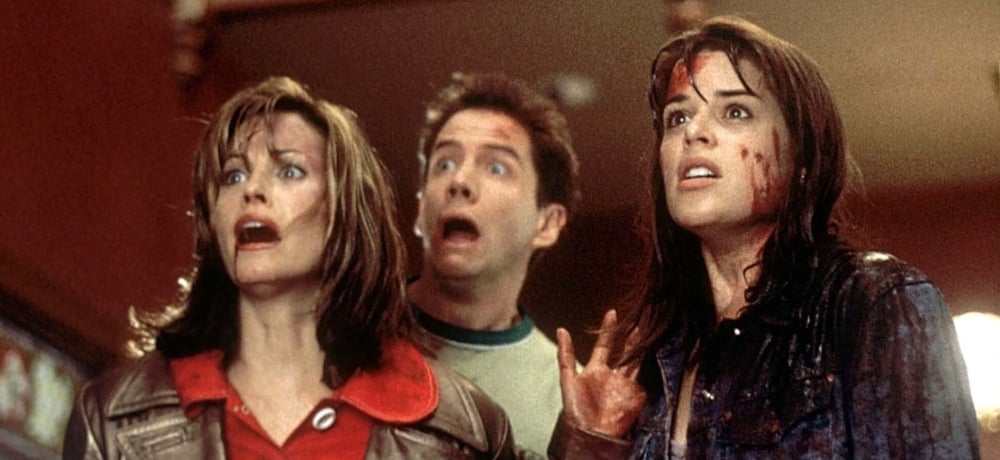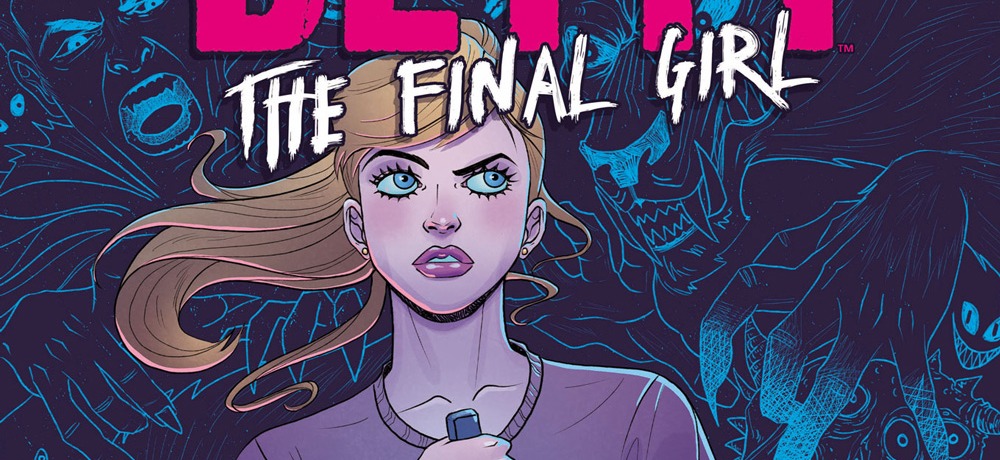


[Editor's Note: Welcome to Archie's House of Horror! We're thrilled and chilled to team up with Archie Comics for this recurring column written by Jamie L. Rotante, writer and Senior Director of Editorial at Archie Comics. Each column takes a closer look at the terrifying themes and eerie inspirations found within the pages of the ever-expanding world of Archie Horror, with this month's column focusing on the horror homages, strong female characters, and subversive slasher elements of the new one-shot anthology Betty: The Final Girl, now available from Archie Comics!]
What does it mean to be a “Final Girl”?
I know, a silly question to ask on this website. If you’re reading Daily Dead, you’re likely already pretty seasoned in all things horror and knowledgeable about the various tropes and subgenres within it. But this isn’t just about defining what a final girl is in its most baseline dictionary definition. It’s about what it takes to be a final girl.
And what exactly that is has changed significantly over the past few decades. In the earliest examples of the idea, final girls were undefeated because of their purity and acted more as “damsels in distress”—types who needed to be saved by heroic men. This shifted over the years to more progressive, modern women who can survive due to their own abilities. Even this is a hotly debated topic, however, as many don’t see final girls as victorious, so often because it seems as though their victories are ambiguous. Does being a final girl really just mean being the last one (seemingly) alive?
I think being a true final girl means so much more than that.
It’s not about luck or virtue. It’s about sheer will and determination to survive. It’s about having the drive to keep going, no matter what the other side of survival might hold. It’s why so many final girls aren’t necessarily thriving, it’s why so many of them appear to be overcome with grief or in a state of total catatonia when all is said and done. It’s as if, even by outliving their enemies and attackers, they’re still ostensibly doomed. That doesn't mean it’s because they’re ill-prepared to survive—instead, the totality of their experiences and how it’s affected them reinforces the idea that these women are not just a trope, but fully realized, three-dimensional characters.
I’d be remiss to talk about the evolution of final girls without mentioning the Scream franchise. Both Sidney Prescott and Gale Weathers are intelligent, resourceful, and determined. They’re both characters who refuse to be victims and who definitely couldn’t be considered doe-eyed damsels in distress. This was something we really wanted to explore in Betty: The Final Girl.

Betty: The Final Girl is Archie Horror’s next one-shot anthology, which sees everyone’s favorite girl-next-door left to her own devices in a remote ski cabin. At its surface, it’s a fairly straightforward tale of surviving the night. But what readers might not expect is an exploration of monsters both of the mind and in the real world, with lines drawn between reality, fantasy, and media.
Eagle-eyed readers will catch quite a few fun horror references throughout Betty: The Final Girl, but there were three movies in particular that we paid special homage to: When a Stranger Calls, You’re Next, and My Bloody Valentine. This allowed us to play with not only the final girl trope but other elements that frequently appear in horror, like the “babysitter and the man upstairs” and cat-and-mouse chases (quite literally, in more than one instance). Plus, for a book released the day after Valentine’s Day, it only made sense to add some romance—but not in the way you might expect!
There was also intentionality with the characters explored. While the titular hero may seem to be the ultimate Final Girl, there are two other characters showcased in this one-shot anthology: Brigitte Reilly and Melody Valentine. Betty Cooper makes sense—she’s known not only for being kind-hearted, caring, and empathetic, but she’s also resourceful, hardworking, and can even have a bit of a devious side, as explored in classic comics and the CW TV series Riverdale. But Brigitte and Melody have never really been given their due; Brigitte is well-regarded in town for her singing abilities, but not much else is known about her. Melody is a ditzy blonde who catches all the guys’ attention.
There is so much more to explore with these characters.
Brigitte Reilly was well overdue for some spotlight, and writer Casey Gilly not only gave her the space for that but also gave us a peek into aspects of her life never before explored. To quote Brigitte herself: “I listen to podcasts. I have anxiety!” With that line alone, we learn so much more about the various facets of her personality and how she uses these to her advantage. Let’s just say, the imagery this story ends on will be stuck in your head (and in your nightmares) for a long time. Thanks in part to the beautiful artwork from Carola Borelli, with colors from Ellie Wright.
Melody Valentine, best known for being Josie and the Pussycats’ drummer, would typically be the first cast-off in a slasher film. She’s scatterbrained. She’s easily distracted. She commands attention from everyone around her and relishes it. She’s a doomed-to-die horror girl. So, of course, she has to win out in the end. Writer Sam Maggs’s decision to have Melody be in charge of her own fate, even if she comes to it out of her own clumsiness, was inspired. This story also ends on a brutal, chilling note, with gorgeous art from Natalie Nardozza and colors by Matt Herms.

And, of course, there’s still Betty. Writer Micol Ostow (who first pitched the idea of doing a final girl-style one-shot) played with this format in the most interesting and unique ways. Brought to life by Laura Braga (who also did hauntingly stunning art on our 2019 horror mini-series Blossoms 666), Ostow’s story tells what seems to be a conventional tale of babysitting gone wrong, with an ending that’s so twisted it might just leave you with more questions than answers, in the best possible way.
Yes, we played with a trope, but the idea wasn’t to just riff on existing media and keep to the specific guidelines of what that trope means. Instead, homage was paid to iconic stories that came before, while expanding on what a final girl is, could be, and the next evolution of its meaning.
Being a final girl means so much more than being the last woman standing. It means being your own person despite unthinkable odds, for better or worse.
And it means being okay with more than a little bloodshed.
---------
To learn more about Betty: The Final Girl and to order a copy of the new one-shot anthology, visit:
CHILLING ADVENTURES PRESENTS... BETTY: THE FINAL GIRL
Veronica has invited Betty to her luxurious mountaintop chalet for a cozy weekend of skiing. But their girls weekend is interrupted when Archie shows up and whisks Veronica off on their own snowy romantic adventure. What could go wrong at a fancy remote cabin in the mountains all by herself? Betty’s mind races and she can’t tell fact from fiction as she suddenly realizes she might not be so alone. Is Betty believing too much in the horror movies she’s watched, or is someone (or something) really out to get her? Find out in this BRAND NEW horror anthology one-shot that‘s equal parts Scream and When a Stranger Calls.
Script: Micol Ostow, Casey Gilly, Sam Maggs
Art: Laura Braga, Natalie Nardozza, Carola Borelli
Colors: Matt Herms
Letters: Jack Morelli
Cover: Laura Braga
Variant Cover: Megan Hutchison
On Sale Date: 2/15
32-page, full color comic
$3.99 U.S.
Cover by Laura Braga:
Variant Cover by Megan Hutchison: